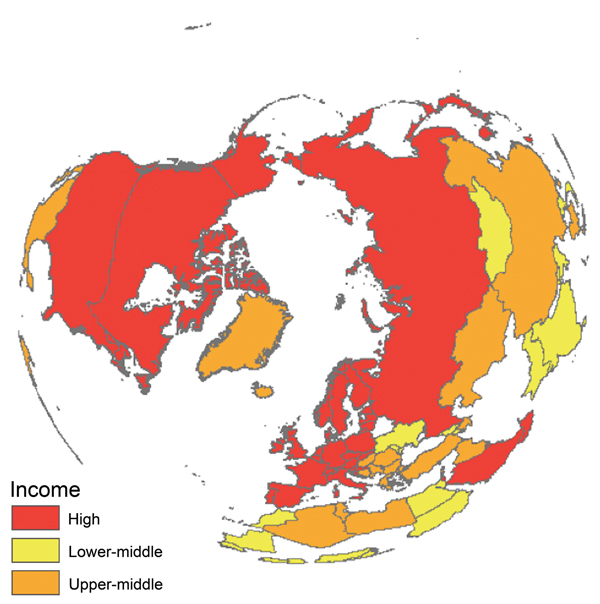Volume 21, Number 4—April 2015
Online Report
Global Avian Influenza Surveillance in Wild Birds: A Strategy to Capture Viral Diversity
Figure

Figure. Feasibility of coordinating and improving avian influenza surveillance in wild birds where viral diversity is highest. Countries in red, orange, and yellow currently self-report some type of avian influenza surveillance in wild birds (For a country list, see online Technical Appendix, http://wwwnc.cdc.gov/EID/article/21/4/14-1415-Techapp1.pdf). Country income levels, based on gross domestic product, further suggest financial capacity to contribute to a coordinated surveillance system. The polar view emphasizes where most avian influenza viral diversity is circulating.
Page created: December 22, 2014
Page updated: December 22, 2014
Page reviewed: December 22, 2014
The conclusions, findings, and opinions expressed by authors contributing to this journal do not necessarily reflect the official position of the U.S. Department of Health and Human Services, the Public Health Service, the Centers for Disease Control and Prevention, or the authors' affiliated institutions. Use of trade names is for identification only and does not imply endorsement by any of the groups named above.